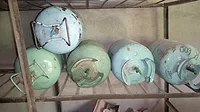3 things to know when choosing valves for PEX
But, before you try the newest (and sometimes cheapest) valve to hit the market, stop and read this article first.

A number of different codes and standards regulate what components may be installed with PEX tubing, and plumbers need to make sure they comply. All photos courtesy of: Uponor

Using a product that has a proven track record will help keep your projects free from callbacks and your trusted reputation intact. All photos courtesy of: Uponor

When it comes to PEX valves and fittings, the manufacturer does matter, and contractors must choose wisely. All photos courtesy of: Uponor
So you’ve got your first (or maybe 500th) job installing a PEX plumbing or hydronic piping system, and you’re seeing an influx of new products hitting your distributor’s shelves to capitalize on the hot PEX applications market.
From fittings to supports to manifolds, there are so many great innovations now available that can make your jobs faster, easier and more profitable.
But, before you try the newest (and sometimes cheapest) valve to hit the market, stop and read this article first. There are a few essential things you need to know before choosing a valve for a PEX piping system.
Regulatory compliance
This is paramount. Building codes, manufacturing standards and listings set regulations for piping systems and components to govern the manufacturing, installation and inspection of products to protect human life, occupant health and safety of the building. And they’re important to your bottom line.
If you happen to install valves that don’t meet a certain code, standard or listing required for your jurisdiction, you’ll have to rip them out and replace them. Now, the money you saved on those cheaper products just went down the drain with your replacement costs.
So, do your research on the valves you choose, and make sure they comply with all necessary local and national building regulations in your area. Don’t skimp on your valves — or any product, for that matter. It’s not worth it.
Codes
For residential potable plumbing applications, the valves may need to meet some or potentially all of the following building codes: International Residential Code (IRC), International Plumbing Code (IPC), Uniform Plumbing Code (UPC) and National Standard Plumbing Code (NSPC).
For commercial potable plumbing applications, the valves may need to meet some or potentially all of the following building codes: International Building Code (IBC), International Plumbing Code (IPC), Uniform Plumbing Code (UPC) and National Standard Plumbing Code (NSPC).
For residential hydronic heating and cooling applications, the valves may need to meet the International Mechanical Code (IMC) and/or Uniform Mechanical Code (UMC).
For commercial hydronic heating and cooling applications, the valves may need to meet the International Building Code (IBC), International Mechanical Code (IMC) and/or Uniform Mechanical Code (UMC).
Standings and listings
For residential and commercial potable plumbing applications, the valves may need to meet some or potentially all of following standards and listings: ASTM F877, ASTM F1960 (exclusively for cold-expansion fittings), NSF/ANSI 14, NSF/ANSI 61, NSF/ANSI 359, NSF/ANSI 372 and ASME A112.18.1.
For residential and commercial hydronic heating and cooling applications, the valves may need to meet some or potentially all of the following standards and listings: ASTM F877, ASTM F1960 (exclusively for cold-expansion fittings), NSF/ANSI 14 and NSF/ANSI 359.
Also, I want to include an important note for those installing PEX systems with ASTM F1960 cold-expansion connection methods. ASTM F1960 includes a list of recognized forged brass alloys which provides evidence the product is made of certified alloys.
Some valve manufacturers will state they are “tested” to ASTM F1960 or that they “conform” to ASTM F1960. However, that does not mean they are listed to ASTM F1960. Implying conformance by stating a valve is “tested” or “conforms to” ASTM F1960 is misleading.
It is vital you only install a valve that is listed to ASTM F1960 to ensure quality and performance for your PEX piping system with cold-expansion connections.
The manufacturer matters
Yes, the manufacturer does matter. Some newer valve manufacturers have recently entered the PEX piping market and are offering products at a lower cost. Be careful. The performance of these parts may not be verified based on available certification or supporting data.
Go with a product that has a proven history of reliability and performance. It is imperative you use valves that are tested, listed and meet all the required codes and standards for the PEX piping application you are installing.
Using a product that has a proven track record will help keep your projects free from callbacks and your trusted reputation intact.
Positive tube stops
A positive tube stop is a design feature on certain PEX valves that ensures the pipe will not extend past a certain point on the valve. It’s a handy way to ensure the pipe is going onto the valve far enough without overextending.
Current valves on the market without stops introduce the risk of leaks due to improper connections. Using valves with positive tube stops ensures a consistent installation with less chance for leaks.
And nobody likes leaks.
For more information about PEX piping systems, visit www.plasticpipe.org or www.ppfahome.org.
Looking for a reprint of this article?
From high-res PDFs to custom plaques, order your copy today!







